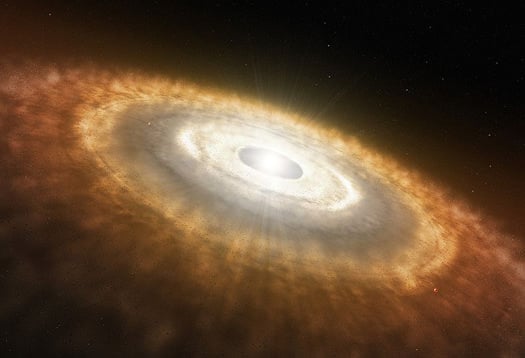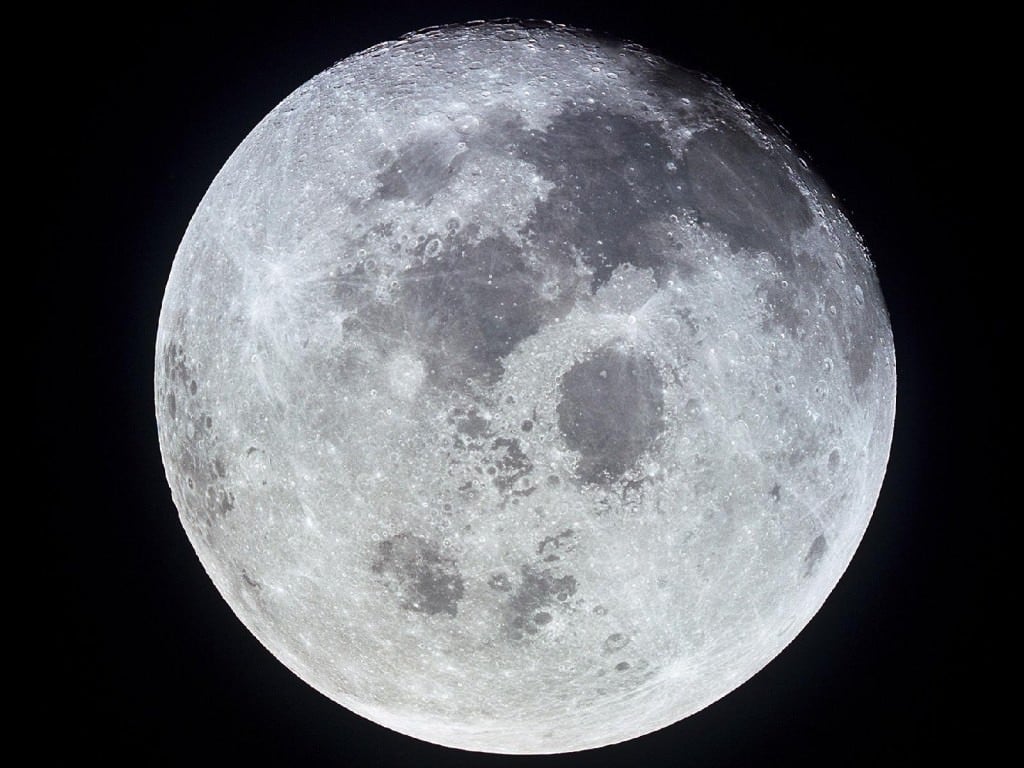The origins of the Moon have been the cause of many a scientific debate over the years but more recently we seem to have settled on a consensus. That a Mars-sized object crashed into Earth billions of years ago, with the debris coalescing into the Moon. The newly formed Moon drifted slowly away from Earth over the following eons but a new study suggests some surprising nuances to the accepted model.
According to current theory, the Moon formed around 4.5 billion years ago, shortly after the Solar System's birth. It began with a massive collision between the early Earth and a Mars-sized protoplanet called Theia. The impact sent debris into orbit around the Earth which eventually coalesced to create the Moon. There is plenty of evidence to support this theory chiefly the composition of Earth's mantle and lunar rocks.
The majority of the debris cloud settled back down on the Earth, a large proportion formed the Moon but some of it was ejected from the Earth-Moon system. In the paper recently authored by Stephen Lepp and his team from the University of Nevada they explored the dynamics of the material ejected from the impact.
Shortly after the Moon formed it was orbiting Earth at a distance about 5% of its current value (average distance - 384,400km) but slowly, due to tidal effects between Earth and Moon it drifted away to its current altitude. Its surface was largely molten magma which gradually cooled and solidified forming the familiar crust, mantle and core that we see today. Heavy bombardment scarred the lunar surface with impact basins and craters and volcanic activity led to the slow formation of the lunar maria.
The orbit of the Moon around the Earth has settled into a slightly elliptical one with an eccentricity of 0.0549. It is not a perfect circle and moves from 364,397km to 406,731km from Earth. The system wasn't so stable in the early days of the Earth-Moon system and the particles in the accreting Moon had more erratic journeys.
One of the terms that describes evolving orbits is nodal precession (where the orbital intersections slowly move around the orbit). There are two types and the first relates to where particles in an orbit slowly precess about the angular momentum vector of the Earth-Moon system. The other occurs around highly eccentric binary systems when the inclination of the orbiting object is large. The particle precesses about the binary eccentricity vector. Taking into account the Earth and orbits of particles in the debris cloud as the Moon started to form, such orbits described would be unstable.
The team showed that of all the possible orbits of particles, those in polar orbits were the most stable. They went further and showed that they existed around the Earth-Moon binary system after the Moon formed. As the separation of the Earth and Moon slowly increased through tidal interactions the region of space where polar orbits could exist decreased. Today, with the Moon at its current distance from Earth, there are no stable polar orbits since the nodal precession driven by the Sun is dominant
The team conclude that the presence of polar orbiting material can drive eccentricity growth of a binary system like the Earth and Moon. If a significant amount of material found its way into a polar orbit then the eccentricity of the Earth-Moon system would have increased.
Source : Polar orbits around the newly formed Earth-Moon binary system
 Universe Today
Universe Today


